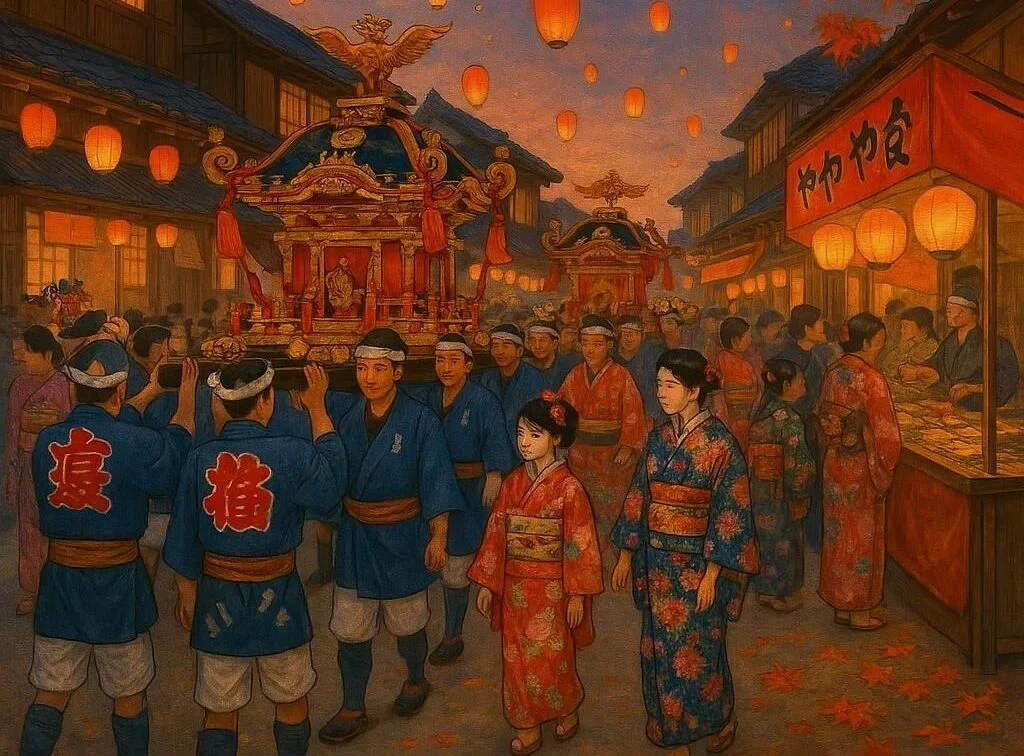510 views Welcome to Washoku: Exploring Japan’s Intangible Culinary Heritage
Japan’s culinary landscape is far more than sushi and ramen; it is an intricate tapestry woven from centuries of regional customs, spiritual reverence for nature, and a profound respect for seasonality. The term washoku—meaning “Japanese food”—embodies not merely a list of dishes but a living, breathing cultural practice that the United Nations Educational, Scientific and Cultural Organization (UNESCO) recently recognized as intangible heritage. This designation signals that washoku is a collective cultural phenomenon worthy of preservation and shared understanding across borders. In this exploration, we’ll unpack what makes washoku distinct, delve into its guiding philosophies, trace its geographic variations, and examine why it remains vibrant in contemporary dining scenes. Whether you’re a global food lover or a curious traveler, understanding washoku will deepen your appreciation for Japan’s subtle flavors and the stories that give them meaning.
Washoku Defined & UNESCO
The word washoku literally translates to “Japanese food” but, in practice, it represents a holistic approach to cooking that prioritizes harmony between ingredients, aesthetics, and the environment. Rather than focusing on culinary trends, washoku emphasizes simplicity, natural flavors, and seasonal purity, making every meal a reflection of the surrounding landscape. In 2019, UNESCO listed washoku as part of the Intangible Cultural Heritage of Humanity, recognizing its vitality as a shared cultural expression spanning over 1,700 years. This nomination was driven by washoku’s remarkable longevity and the ritualistic rituals surrounding everyday meals—prefacing the preparation with purification, acknowledging each ingredient’s origin, and presenting plates with careful consideration of color, texture, and balance. By elevating washoku to a heritage category, UNESCO urges both Japan and the world to safeguard and celebrate the collective memory encoded in rice, miso, and seaweed, ensuring these traditions are not lost amid the fast‑paced modernization of food culture.
Core Principles & Seasonal Philosophy
Washoku’s aesthetic is a meditative dance of color, texture, and aroma that reflects the four seasons. At its heart lie three pillars: Saison—a respect for the time of year; Simpli‑ simplicity that strips dishes to their essential ingredients; and Harmony— the balance between form, taste, and spirit. The Japanese mind associates each season with specific produce—matsutake mushrooms flagellating in autumn, the delicate edamame of spring, or the robust ovasuef in winter. Through such mindful selection, chefs honour the life cycles of nature, giving diners a sensory itinerary that moves with the sun and the Mountain winds. Moreover, washoku places equal importance on presentation; the arrangement of a miso soup bowl or a sushi platter is not merely decorative, it is a visual narrative that guides the eater’s anticipation and appreciation. This reverence for the seasons is not a gastronomic gimmick but a cultural credo that binds generations to the rhythms of the earth.
Umami, Flavour, and Key Ingredients
Central to washoku is the concept of umami—often described as “savory” or the “fifth taste.” Historically discovered in kombu and miso, umami forms the umbral core around which many Japanese dishes orbit. This potent flavor emerges from naturally occurring glutamates in seaweed, fermented soy, and aged fish. Pairing umami‑rich broth with rice creates a harmony that satisfies basic needs while adding layers of depth. Core ingredients—rice, soy sauce, miso, pickled vegetables, and fermented foods—are more than staples; they carry histories of trade, climate, and collective memory. For instance, sake, distilled from polished rice, not only acts as a beverage but also as a sauce in braised dishes, enhancing both flavor and aroma. While vegetables carry their own subtlety, the balancing act often relies on the precise timing and saltiness of fish stock or dashi, which, when combined, create a sensory narrative that feels complete.
Regional Diversity & Signature Dishes
Japan’s 47 prefectures each contribute a distinct palette to washoku, turning every regional food into a mouth‑watering passport stamp. Hokkaido’s cold climate yields deeply flavored fish, crustaceans, and dairy, giving sushi a buttery texture and ramen a hearty broth. In the Kansai region, the meticulous drizzle of miso on rice creates “okonomiyaki,” a savory pancake that embodies local community spirit. On the island of Kyushu, fiery interplays of black pepper and fresh squid produce “tonkatsu,” while deep‑sea tuna sashimi showcases the island’s pristine waters. Meanwhile, the historic town of Hakone produces “kurobuta” pork—an heirloom breed prized for its marbled fat and unique fragrance. From the ancient grain rituals of Kyoto’s matcha tea ceremonies to the smoky miso braised “tonkotsu” beef of Osaka, each dish carries a name, a story, and a cultural stamp that enlivens Japanese cuisine as a living museum.
Traditional Techniques & Cultural Rituals
The physical act of washing and planning a meal is as ceremonious as the dish itself. From the ritual chopping of a fresh fish to the strategic layering of nori on a sushi roll, each step shows reverence for craft. Dashi liquefaction, the heart of Japanese soups, is a meticulous process of simmering kombu, bonito flakes, and kelp to extract subtle umami hints. In the evening, eating ekiben, a stationalized bento box at passing trains, becomes a communal ritual where strangers share a bite of seasonal delicacies. Bathing in a shōshoku—a practice where each utensil is washed early to prepare for the next meal—reduces waste and maintains purity. Further, seasonal festivals—matsuri—elevate washoku beyond daily cooking; they host large‑scale matsutake mushroom distribution and sushi festivals that celebrate local farmers, fishers, and artisans. These traditions illustrate that Japanese food is a living ode to precision, patience, and cultural continuity.
Modern Adaptations, Sustainability, and Global Influence
In recent decades, washoku has navigated rapid modernization, yet it remains anchored in tradition. International chefs now reinterpret classic donburi bowls with locally sourced quinoa and kale, while Japanese artisans export artisan miso kits across continents for home‑kits enthusiasts. Sustainability is woven into many restaurants; the “305”–related practice of avoiding waste by using every part of fish—roe, blood, tail—is increasingly championed in contemporary Taiwanese temples and Japanese coastal towns alike. Meanwhile, the social media era has made sashimi presentations trend‑inducing and has amplified the “foodie maps” that guide travelers toward less touristy tofu shops in Kyoto. Meanwhile, a growing generation of farm‑to‑table purists challenge the status quo by cultivating heritage rice strains resistant to climate change, as part of a global pivot to reduce carbon footprints. Such modern twists do not dilute heritage; rather, they help the washoku community grow robustly through collaboration, technology, and responsible stewardship.
Experiencing Washoku: Etiquette, Markets, Experiences
For a tourist, washoku is more than a culinary tour; it’s a cultural immersion. When visiting a local market—such as Tokyo’s Tsukiji Outer Market—treat vendors as guides; ask about the best seaweed of the day or the freshest pickerel for an open‑air sushi recipe. Meals must be approached with etiquette: raise chopsticks only set, do not tip, and always express gratitude with gochisōsama deshō when finishing. Several cities offer immersive cooking schools that teach teppanyaki technique, tempura dipping sauces, and the art of sake tasting, giving participants hands‑on insight into washoku’s subtle equilibrium. For those who prefer a serene setting, a yudofu hot pot in Kyoto’s Gion district delivers a meditative sense of communion with the local people and the tea ceremony that follows. Whether you’re sampling koshin rice grain at a harvest festival or savoring a winter soba noodle broth in Chiba, these experiences underscore the living nature of washoku—an ever‑evolving, inclusive narrative that welcomes all.
Conclusion
Washoku invites us into a world where food becomes a symphony of senses, the seasons and the terrain intricately woven into every plate. It transcends the notion of a mere diet; it becomes a cultural compass guiding millions toward mindful, respectful eating practices. Whether you savor a moss‑covered miso in Hokkaido or sip a warm, ginger‑spiced tea in Kyoto, each bite carries stories of labor, art, and sacrifice spanning centuries. In an age of global fast‑food chains, washoku’s enduring appeal reminds us that cuisine can be both a living heritage and a testament to sustainability. By embracing this thoughtful culinary philosophy, communities worldwide can honor their own food narratives while contributing to a shared, intuitive, and nourishing conversation about what we eat, why we eat it, and how we can protect it.





